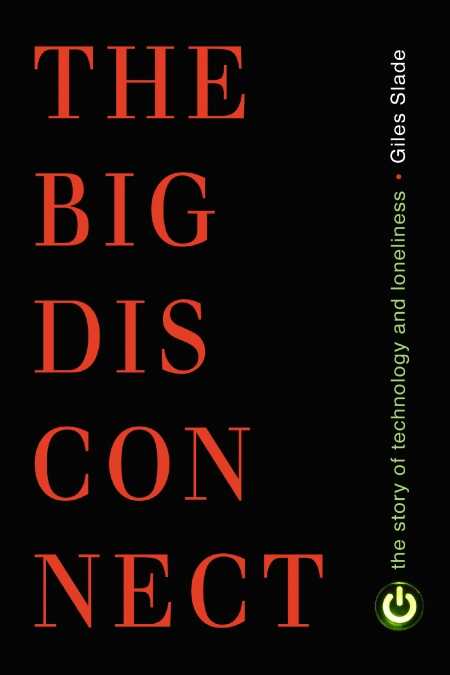The Big Disconnect
The Story of Technology and Loneliness
Don’t read Giles Slade’s The Big Disconnect expecting a pithy, simple explanation of how technology is wreaking havoc on the world of interpersonal relationships.
Do read The Big Disconnect for a scathing, in-depth scrutiny of how the past century has turned modern-day Americans into slaves to their machines: tablet computers, smartphones, blazingly fast Internet connections, and the like.
The book starts off with a quote from Thoreau’s Walden: “We are for the most part more lonely when we go abroad among men than when we stay in our chambers.” The words still ring true 158 years later, as texting replaces actual visits with family and loved ones, and reading status updates on Facebook stands in for time spent with friends. In the first part of the book—the cleverly titled “Breadcrumbs”—Slade does a deft job of detailing how the development of vending machines, cars, and the glamorization of Hollywood idols isolated Americans further from their friends and families. Many things once meant to be enjoyed with others—radio and TV programs, for example—also turned into solitary pursuits.
Slade, who writes for HuffingtonPost.com and authored Made to Break: Technology and Obsolescence in America, is an intrepid researcher. (The book features thirty-five pages of notes.) But however interesting the history behind the disconnection of American society, one can’t help feel that the “meat” of the tome—the modern-day meanings and statistics about how wired Americans are—is found only in the first and last chapters. Too many chapters—eight, in fact—are devoted to the cultural and anthropological meanings behind music and how it affects human behavior.
It’s in the beginning and final chapters that you’ll discover that 25 percent of North Americans have no best friend or confidante and that 40 percent live alone. The book leaves readers to ponder—just as Thoreau did in 1854—how much of a toll technology has taken on their familial relationships.
“Will we become isolates consoling ourselves with any variety of electronic toys, fathers and mothers to the first generation of human-simulation machines, or will we limit the application of technology as we now limit the uses of weapons and dangerous drugs?” asks the author.
Reviewed by
Dana Laverty
Disclosure: This article is not an endorsement, but a review. The publisher of this book provided free copies of the book to have their book reviewed by a professional reviewer. No fee was paid by the publisher for this review. Foreword Reviews only recommends books that we love. Foreword Magazine, Inc. is disclosing this in accordance with the Federal Trade Commission’s 16 CFR, Part 255.

